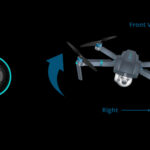Thanksgiving often brings the humble turkey to mind, a centerpiece of festive meals across the United States. As families gather to enjoy this iconic bird, a curious question might arise: can a turkey actually fly? The answer, like the bird itself, is more complex than it first appears, revealing fascinating differences between wild and domestic turkeys.
Wild Turkeys: Masters of the Sky
Wild turkeys are surprisingly agile and powerful fliers. These lean, athletic birds are far removed from their domesticated cousins, possessing a remarkable capacity for aerial movement. According to Charles Ruth, Big Game Program coordinator for the S.C. Department of Natural Resources (SCDNR), wild turkeys are built for speed and endurance.
“The wild turkey in a sprint can outrun a galloping horse for a short distance,” said Charles Ruth… “Although it is one of the largest game birds, weighing between 15 and 25 pounds, it can fly distances of more than a mile, sometimes at speeds of 55 miles per hour.”
This impressive flight capability is crucial for wild turkeys’ survival. They utilize flight to escape predators, reach roosting spots high in trees for safety at night, and cover considerable distances in search of food and mates. Their streamlined bodies, strong wings, and keen instincts make them adept at navigating through forests and open landscapes.
Alt text: A wild turkey with brown and black feathers is captured in flight against a backdrop of green trees, wings spread wide, demonstrating its flight capability.
Wild turkeys are not just fast fliers; they are also strategic ones. They typically fly in short bursts to quickly evade danger or reach a desired location, conserving energy for when it’s most needed. Their flight is a testament to their wild nature and evolutionary adaptations.
Domestic Turkeys: Grounded by Design
In stark contrast to their wild relatives, domestic turkeys have largely lost the ability to fly. This dramatic difference is a direct result of selective breeding practices over centuries, primarily aimed at maximizing meat production.
Domestic turkeys have been bred to be heavier and broad-breasted, traits highly valued in the commercial poultry industry. This focus on size and meat yield has come at the expense of their flight muscles and overall agility. Their bodies are simply too bulky to become airborne effectively. Furthermore, domestic turkeys often have shorter legs, hindering their ability to gain the necessary momentum for takeoff.
Alt text: A white domestic turkey with a large breast and short legs stands in a farmyard setting, highlighting its physical characteristics that inhibit flight.
While domestic turkeys might be able to flutter short distances or hop over low obstacles, they are incapable of sustained or meaningful flight. This flightlessness makes them vulnerable to predators if not protected and confines them to ground-level existence.
The Tale of Two Turkeys: Wild Heritage, Divergent Paths
Despite their vastly different flight capabilities, wild and domestic turkeys are genetically the same species. Their divergence is a compelling example of how human intervention through selective breeding can drastically alter the physical attributes and natural behaviors of an animal.
The original article highlights the historical context of this divergence, noting that Native Americans had already domesticated turkeys long before European colonization. Spanish explorers brought these domesticated birds back to Europe in the 16th century, and these European domestic turkeys were later brought back to the Americas by colonists. This transatlantic journey and subsequent breeding further shaped the domestic turkey we know today.
The wild turkey, meanwhile, remained in its natural state, honed by natural selection to thrive in diverse environments. Their continued ability to fly is a vital part of their survival strategy, reflecting their wild heritage and resilience.
In conclusion, when considering “Can A Turkey Fly?”, it’s crucial to distinguish between wild and domestic birds. Wild turkeys are indeed capable fliers, utilizing this skill for survival and thriving in their natural habitats. Domestic turkeys, on the other hand, have been selectively bred for meat production to such an extent that they have lost their ability to fly effectively. This Thanksgiving, as you enjoy your turkey dinner, take a moment to appreciate the fascinating story of these birds and the contrasting paths their wild and domestic counterparts have taken.

